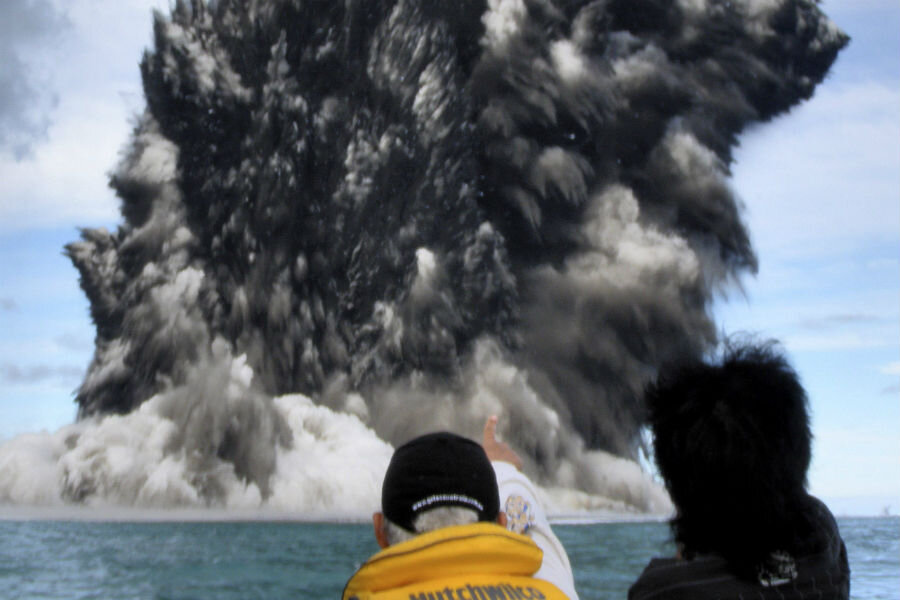How erupting underwater volcanoes ended 'Snowball Earth' and gave rise to life
Loading...
It took an ice age and the action of underwater volcanoes to create animal life on Earth, according to new research.
About 720 to 640 million years ago, the planet was in a phase descriptively known as Snowball Earth, during which most of the surface was covered in ice for tens of millions of years. But beneath the ice, underwater volcanoes were erupting, and creating new chemical reactions, according to a study published Monday in Nature Geoscience.
Geoscientists have long wondered "how and why the ocean chemistry changed as the ice suddenly melted," lead author Thomas Gernon writes in a commentary of his findings.
The study, published with colleagues from the University of Southampton, sought to answer these questions and found that erupting underwater volcanoes during Snowball Earth played a key part in the planet's dramatic change.
The researchers found that carbon dioxide emissions from volcanic activity below the ice led to a rapid greenhouse-gas-fueled warming of the planet.
The breakup of supercontinent Rodinia gave rise to Snowball Earth by changing the chemistry of the oceans through increased river waters pouring into the ocean. This in turn reduced heat-trapping carbon dioxide in the atmosphere, dramatically cooling the planet.
Another consequence of Rodinia's breakup was the formation of tens of thousands of kilometers of underwater ridges, according to the researchers. While spewing lava was pushing Earth out of its ice age, it was also chemically reacting with the icy ocean: calcium, magnesium, silica and, the researchers think, even phosphorus were released.
Dr. Gernon writes that during this extreme climate phase on Earth, one would hardly expect complex life forms to be taking shape, and yet, this is what occurred.
The results of the study help explain the presence of oxygen in Earth's atmosphere and oceans, the building block that allowed animal life to evolve from single-celled organisms into animals.
"Before Snowball Earth, most living organisms in the sea were free-floating bacteria consisting of just one cell," he writes. But high phosphorus levels, triggered by the underwater volcanoes, would have stimulated the production of multicellular organisms such as algae in the ocean.
The researchers found that it is the high phosphorus levels that oxygenated the atmosphere and oceans, and played a critical role in the creation of DNA and cell membranes – and the profusion of life on Earth from single-cell bacteria to algae to the animal kingdom we know today.
As these microscopic organisms, largely made up of carbon, hydrogen and oxygen, "were continuously buried on the seafloor, the carbon remained there, leading to an increase in free oxygen levels in the water and atmosphere," according to Gernon. "The algae and cyanobacteria also produced and released oxygen via photosynthesis – crucial for animal life to evolve."








